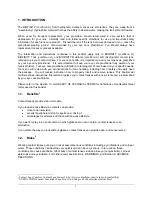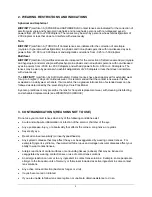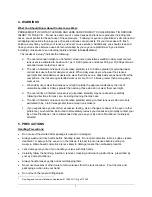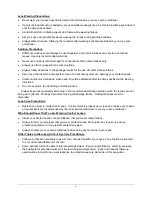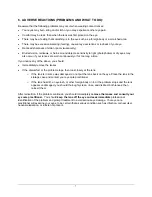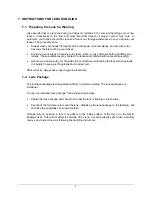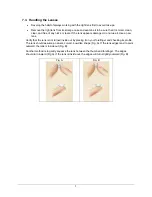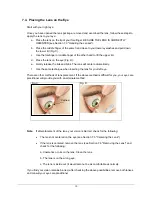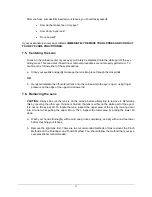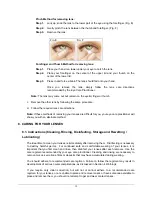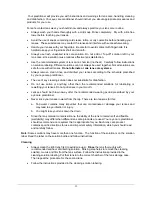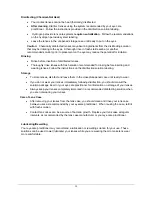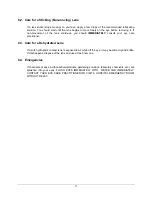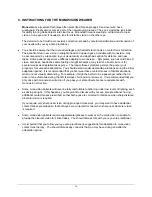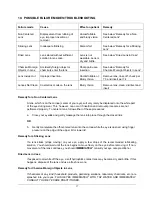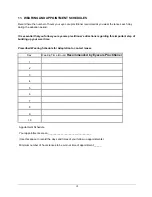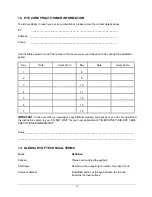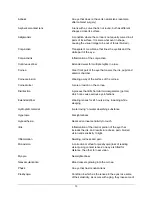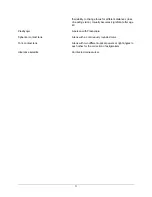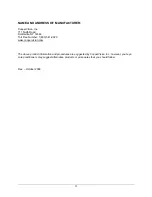
17
10. POSSIBLE FAILURE MODES/TROUBLESHOOTING
Failure mode
Cause
Effect on patient
Remedy
Non Centered
Lens
Displacement from rubbing of
eye, improper insertion or
removal
Uncomfortable
and blurry vision
See below “Remedy for a Non
Centered Lens”
Sticking Lens
Inadequate Blinking
Discomfort
See below “Remedy for a Sticking
Lens”
Dried Lens
Lens stored without sufficient
solution in lens case.
Lens is not
wearable. Lens is
dry and brittle.
See below “Dried Lens in Case”
Chemical/Foreign
Objects in Lens
Accidently foreign object or
chemicals enter the lens
Sharp pain upon
insertion
See below “Remedy for
Chemical/Foreign Objects in Lens”
Lens Inside Out
Improper Insertion
Uncomfortable or
Blurry Vision
Remove lens, rinse off, check per
7.3 and insert per 7.4
Lenses Not Clean Cosmetics or oils on the lens
Blurry Vision
Remove lens, clean, disinfect and
insert
Remedy for a Non Centered Lens
A lens, which is on the cornea (center of your eye), will very rarely be displaced onto the white part
of the eye during wear. This, however, can occur if insertion and removal procedures are not
performed properly. To center a lens, follow either of these procedures:
a.
Close your eyelids and gently massage the lens into place through the closed lids
OR
b.
Gently manipulate the off-centered lens onto the cornea while the eye is opened, using finger
pressure on the edge of the upper lid or lower lid.
Remedy for a Sticking Lens
If a lens sticks (stops moving) on your eye, apply a few drops of the recommended lubricating
solution. You should wait until the lens begins to move freely on the eye before removing it. If non-
movement of the lens continues, you should
IMMEDIATELY
consult your eye care practitioner.
Dried Lens in Case
If exposed to air while off the eye, a soft hydrophilic contact lens may become dry and brittle. If this
happens, dispose of the lens and use a fresh new one.
Remedy for Chemical/Foreign Objects in Lens
If chemicals of any kind (household products, gardening solutions, laboratory chemicals, etc.) are
splashed into your eyes: FLUSH EYES IMMEDIATELY WITH TAP WATER AND IMMEDIATELY
CONSULT YOUR EYE CARE PRACTITIONER.

